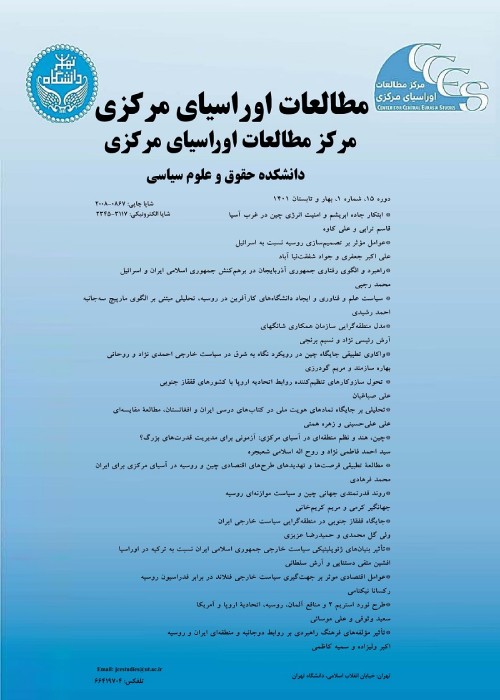The Role of Natural Gas in Energy Diplomacy of the Islamic Republic of Iran and the Russian Federation: Capacities and Obstacles
In an era of globalization and widespread interaction in politics and economics, energy as a powerful economic tool has found a key place in countries' diplomacy. Among the various energy carriers, global demand for gas as a cheap and clean fuel is growing rapidly, and this matter has increased competition among producing countries for greater use of this type of fuel in energy diplomacy. The benefits of producing, transporting, and consuming this natural resource can be used as a tool to advance the foreign policy of countries that are part of the value chain of this energy carrier. Given that the Islamic Republic of Iran and the Russian Federation are among the largest holders of gas resources in the world and their target markets are largely common, the two countries are practically in a competitive position in the field of trade of this energy carrier.
The main question of this research is "What are the capacities and obstacles of Iran and Russia in using natural gas in their energy diplomacy?".
The hypothesis of this research is as follows: The Islamic Republic of Iran, due to its great distance from the Russian Federation in the global gas market, has not been able to use natural gas efficiently in its energy diplomacy and turn it into a tool to advance its foreign policy goals.
Using the Comparative method, the competitiveness of these two countries has been compared and analyzed in four indicators of production capacity, surplus gas, gas trade balance, and gas transmission capacity.
The growth of gas consumption in the 21st century and its replacement by oil and coal has led to this century being called the gas century. The Islamic Republic of Iran, as one of the largest holders of gas resources in the world, should define its relations with the Russian Federation as one of the main competitors in the market of this energy carrier, it must also increase its competitiveness with this country in the European market as the gas territory of Russia and the Asian markets (China and India).Although the two countries are not far apart in terms of natural gas reserves, Russia is far ahead of Iran in terms of production capacity and export capacity. While Russia is the world's largest exporter of natural gas, Iran's gas trade balance is minimal. More than half of the country's energy basket is supplied by natural gas. Very high domestic consumption is one of the factors limiting exports in Iran. Non-optimal consumption in the domestic and industrial sectors causes a large annual waste of gas production. Lack of domestic financial resources and failure to attract foreign investment is another important factor limiting Iran's gas production and exports. Sanctions by the Security Council, the United States, and Europe are other factors that have affected Iran's gas industry for several years. All of this has led Iran to have just about one percent of the total world gas trade for several years. Some statistics even show that in the long run, the balance of Iran's gas trade has been negative.On the other hand, Iran has not been successful in producing LNG and has no production, while some analysts believe that the natural gas market will find a new definition in the coming years based on LNG shipments and can play a role in the global arena as a credible market such as the global crude oil market. According to BP, LNG exports are likely to exceed pipeline gas supplies by 2025.
The findings of this study indicate that due to Iran's infrastructural limitations in many gas-related industries, extremely high domestic consumption, and lack of sufficient financial resources to finance gas industry projects, there is a significant difference in Iran's export potential compared to the Russian Federation in the global gas market, which limits the possibility of competition, at least in the short term. The Islamic Republic of Iran also lacks a comprehensive doctrine of energy diplomacy, while Russia has outlined its energy diplomacy policies and goals in 2035 in its upstream documents. To partially bridge this gap, the Islamic Republic of Iran can establish a link between production, domestic consumption, and exports by designing a long-term doctrine, so that increasing production and improving the pattern of domestic consumption can be directed towards export development. Focusing on the development of indigenous knowledge and technology as well as trying to raise capital to finance existing gas industry projects are other important measures. It must also be able to clearly define its energy diplomacy to allow for multifaceted planning between production, domestic consumption, and foreign marketing.
- حق عضویت دریافتی صرف حمایت از نشریات عضو و نگهداری، تکمیل و توسعه مگیران میشود.
- پرداخت حق اشتراک و دانلود مقالات اجازه بازنشر آن در سایر رسانههای چاپی و دیجیتال را به کاربر نمیدهد.


